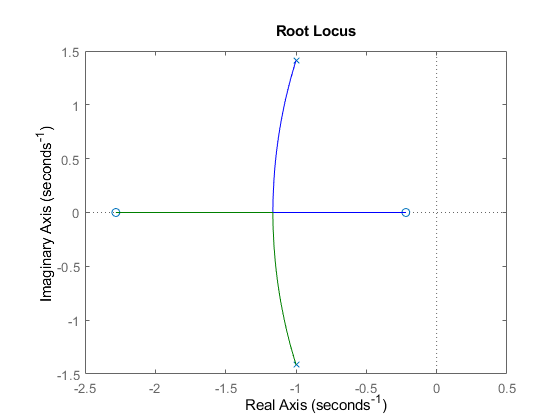sgrid
Generate s-plane grid of constant damping factors and natural frequencies
Description
sgridgenerates a grid of constant damping factors from 0 to 1 in steps of 0.1 and natural frequencies from 0 to 10 rad/sec in steps of one rad/sec for pole-zero and root locus plots.sgridthen plots the grid over the current axis.sgridcreates the grid over the plot if the current axis contains a continuous s-plane root locus diagram or pole-zero map.
sgrid(plots a grid of constant damping factor and natural frequency lines for the damping factors and natural frequencies in the vectorszeta,wn)zetaandwn, respectively.sgrid(zeta,wn)creates the grid over the plot if the current axis contains a continuous s-plane root locus diagram or pole-zero map.
Alternatively, you can selectGridfrom the context menu to generate the same s-plane grid.
sgrid(___,'new')clears the current axes first and setshold on.
sgrid(plots the s-plane grid on theAX,___)AxesorUIAxesobject in the current figure with the handleAX. Use this syntax when creating apps withsgridin the App Designer.


